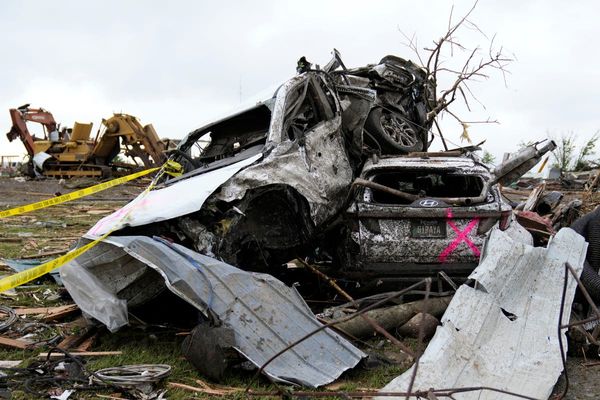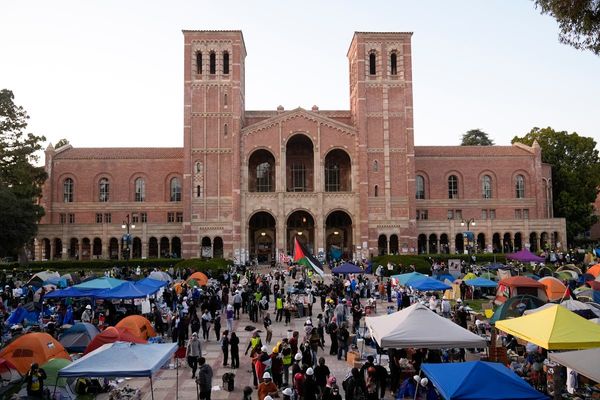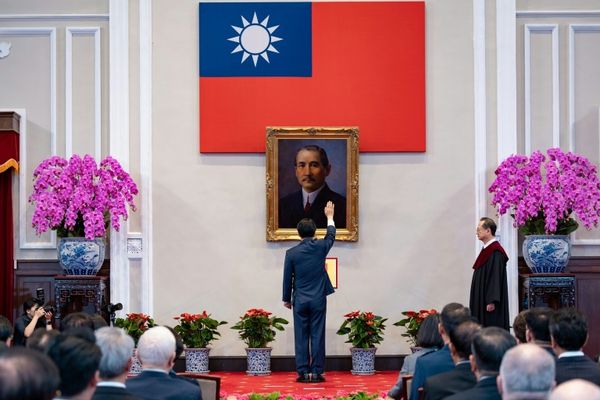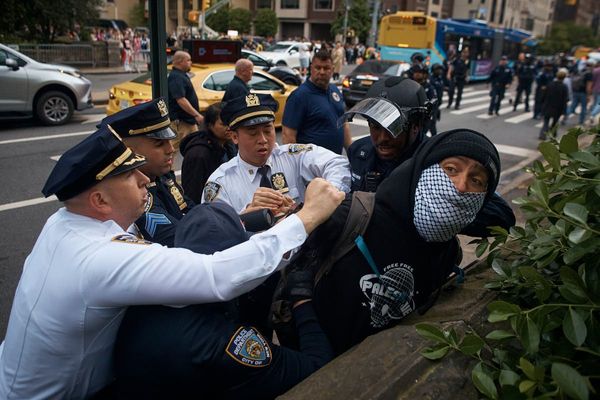
It seems like only yesterday that automakers across the U.S. began to flock to Tesla's North American Charging Standard for their cars. Since Tesla has the largest concentration of Level 3 chargers in the U.S. (and was willing to play ball with direct competitors), opening up its once-exclusive network was an obvious move to make. Now, in a surprise play, CEO Elon Musk is reportedly letting go of the entire team behind one of its biggest selling points: the Supercharging network.
Welcome back to Critical Materials, your daily roundup for all things EV and automotive tech. Today, we're talking about Tesla's big brain decision to let go of its entire Supercharging team, its big win in China, and a final federal ruling to improve safety through in-car tech. Let's dig in.
30%: Tesla Chops Entire Supercharging Team

Tesla's recently announced that it would lay off "more than 10%" of its global workforce, and a new report from The Information indicates that another round of leadership and workforce layoffs are now underway.
This time, it's a move that pretty much nobody saw coming. Tesla has reportedly decided to cut off one of its most important arms—the Supercharging team.
Got a Tip About Tesla?
We want to hear from you.
Were you impacted by Tesla's Supercharger team layoffs?
Just want to vent? Do you know what's going to happen with Tesla charging next? We would love to chat.
Contact this reporter from a non-work device and in a safe place: Rob.Stumpf@InsideEVs.com
We can keep things anonymous.
On the chopping block is Rebecca Tinucci, the senior director of Tesla's Supercharging unit, and Daniel Ho, head of Tesla's new vehicles program. Reportedly included with Tinucci and Ho's layoffs are their entire teams—including 500 employees who work for the Supercharging unit and made it possible for Tesla to open its charging network to other automakers.
Multiple posts from now-former Tesla employees on LinkedIn and other social networks confirmed the cuts.
A snippet from CEO Elon Musk's memo of the layoffs was included in the report from The Information:
Hopefully, these actions are making it clear that we need to be absolutely hard core about headcount and cost reduction. While some on exec staff are taking this seriously, most are not yet doing so.
Musk went on to say that executives and their subordinates who "don’t obviously pass the excellent, necessary and trustworthy test" would be relieved of their positions.
(By the way, "hardcore" is a longtime Musk trope, and whether it refers to Twitter/X or Tesla, it means bad news for employees.)
Tinucci has been with Tesla since 2018. Ho, who was a program manager of the development of the Model S, 3, and Y, had been with the company since 2013. Both join two other long-term executives—Drew Baglino, chief of battery development, and Rohan Patel, global director of public policy and business development—who departed last month.
Bloomberg previously reported that Tesla could be cutting as much as 20% of its global workforce. It's not clear where this wave of Tesla's layoffs will crash, though one could reasonably assume that nobody expected the entirety of the Supercharging team to be in Musk's sights for this.
The effect of such cuts obviously remains to be seen. From the outside looking in, Tesla's Supercharging networks has always been its greatest asset. The network has been reliable (especially when put up against other networks) and has grown extremely rapidly. This could prove to be a rather unpopular move, especially when Tesla stands to earn $3 billion by 2030 from opening its charging network to other automakers.
60%: Tesla Gets Tentative Approval for Full Self-Driving in China

Tesla has struck a tentative deal with China to launch its Full Self-Driving software suite on its roads, and here's how it might work.
According to a report from the Wall Street Journal, during Musk's visit to China, officials have greenlit the rollout of FSD. The approval is a major win for Tesla, especially considering just how regulated automated driving is within the country. But perhaps more importantly, it opens up the possibility of additional revenue through the sale of Tesla's $8,840 (64,000 RMB) FSD software in China.
From the WSJ:
Chinese officials told Tesla that Beijing has tentatively approved the company’s plan to launch its “Full Self-Driving,” or FSD, software feature in the country, people familiar with the matter said Monday.
The U.S. electric-vehicle maker will deploy its autonomous driving services based on mapping and navigation functions provided by Chinese technology giant Baidu.
Now, there are some caveats to this deal, namely the requirement that Tesla use a domestic partner for its mapping and navigation needs within China. It was announced yesterday that the automaker struck a partnership with Chinese tech giant Baidu (one of China's 20 qualified suppliers who have top-level mapping credentials) to do exactly that.
Tesla's partnership with Baidu isn't exactly new—Tesla has been working with the company since 2020 for in-car mapping and navigation—though its use of more intricate lane-level driver assistance functions is new.
China has extremely strict data governance laws which prohibit the exportation of data associated with its roads and mapping, including images captured from vehicles. This has led to privacy concerns for Tesla, even outright bans of Tesla vehicles from Chinese military complexes. So for Tesla to be approved for even the smallest bit of autonomy, albeit on certain conditions, is a major victory.
90%: Feds Mandate Automatic Emergency Braking on All New Cars From 2029

In just five short years, almost every single new car sold in the U.S. will be required to have Automatic Emergency Braking (AEB) as a standard feature.
In what seems like a no-brainer move, the National Highway Traffic Safety Administration (NHTSA) has finalized a rule which would require nearly all new light-duty passenger vehicles to be equipped with AEB.
The final rule requires automakers to equip vehicles with systems that function at all hours of the day, using a combination of cameras, short-range radar, and other technologies to detect other cars and pedestrians while the vehicle is in motion and apply the brakes to prevent the collision, or at least help to minimize injury.
Now, automakers have already been working towards this goal voluntarily. In 2016, 20 automakers in the U.S. committed to equipping its vehicles with this tech as standard equipment. The Insurance Institute for Highway Safety says that 95% of the vehicles sold by those automakers today are equipped with the feature.
One of the biggest hurdles is that many of those AEB systems just aren't that great. Honda fell under the NHTSA's scope earlier this year for exactly that reason, and Tesla isn't free from phantom braking events either. If the rule's goal is to be successful, the technology must also be reliable—and it has about the length of a new car loan to get up to par.
The rule will take effect in September 2029 (two years later than originally proposed) after a spike of traffic-related deaths following the Covid-19 lockdowns. NHTSA believes that the ruling will save as many as 360 lives every year and prevent more than 24,000 injuries.
100%: What is Tesla's Competitive Edge Now?

With stagnating models and investors calling for more, Tesla is losing its technological gap to legacy automakers and even Chinese automakers building cars for the very first time. CEO Elon Musk has made it clear that he is bored with the auto industry after once again declaring that Tesla is a tech company that just so happens to build cars during a horrendously bad quarter.
Tesla has made early moves to divest from just cars. It's in the energy storage sector, its solar entity is still kicking, it's supposedly working on a "Cybercab," and it wants to rent out compute space in its future cars to the highest bidder.
So if Tesla's edge isn't going to be in automotive tech, where exactly do you see its place in the next decade?







